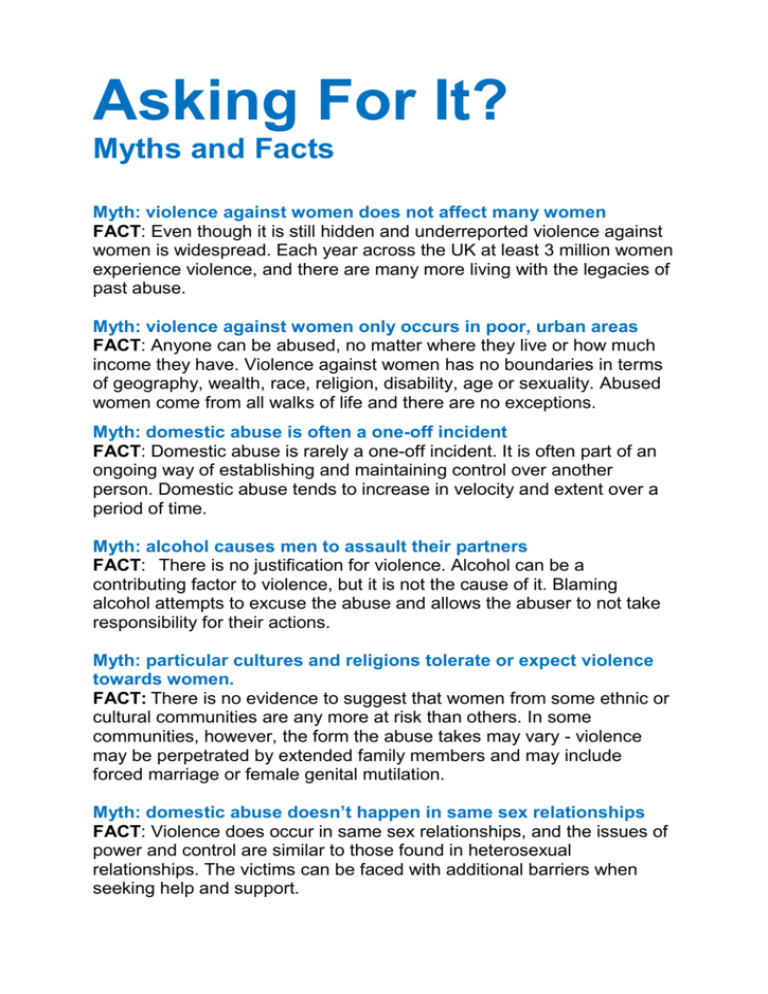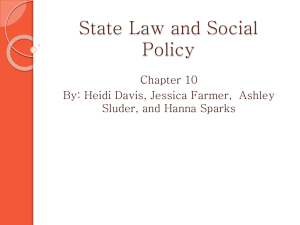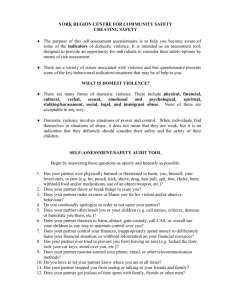
Asking For It?
Myths and Facts
Myth: violence against women does not affect many women
FACT: Even though it is still hidden and underreported violence against
women is widespread. Each year across the UK at least 3 million women
experience violence, and there are many more living with the legacies of
past abuse.
Myth: violence against women only occurs in poor, urban areas
FACT: Anyone can be abused, no matter where they live or how much
income they have. Violence against women has no boundaries in terms
of geography, wealth, race, religion, disability, age or sexuality. Abused
women come from all walks of life and there are no exceptions.
Myth: domestic abuse is often a one-off incident
FACT: Domestic abuse is rarely a one-off incident. It is often part of an
ongoing way of establishing and maintaining control over another
person. Domestic abuse tends to increase in velocity and extent over a
period of time.
Myth: alcohol causes men to assault their partners
FACT: There is no justification for violence. Alcohol can be a
contributing factor to violence, but it is not the cause of it. Blaming
alcohol attempts to excuse the abuse and allows the abuser to not take
responsibility for their actions.
Myth: particular cultures and religions tolerate or expect violence
towards women.
FACT: There is no evidence to suggest that women from some ethnic or
cultural communities are any more at risk than others. In some
communities, however, the form the abuse takes may vary - violence
may be perpetrated by extended family members and may include
forced marriage or female genital mutilation.
Myth: domestic abuse doesn’t happen in same sex relationships
FACT: Violence does occur in same sex relationships, and the issues of
power and control are similar to those found in heterosexual
relationships. The victims can be faced with additional barriers when
seeking help and support.
Myth: women often provoke assaults and therefore ‘ask for it.’
FACT: There is no justification for violence. No one 'deserves' being
beaten. Long-standing exposure to violence can have the effect of
making the woman believe that she deserves to be hurt. It can lessen
confidence and some women may start to rationalise their partner's
behaviour.
Myth: violence against women is the same as violence against men
FACT: Statistics do demonstrate that men can be victims of violence at
the hands of partners and ex-partners. Nevertheless, men’s experiences
of violence are different. Male victims are less likely to suffer sustained
violence, be seriously injured and report feeling fearful.
Myth: domestic abuse is a private matter, you shouldn’t get
involved
FACT: Domestic abuse is not a private matter and is against the law. For
too long domestic abuse has been allowed to happen behind closed
doors. People think that what goes on in the home is private and
therefore should not get involved.
Not getting involved won't make domestic violence disappear. We all
have a responsibility to speak out against it.
Myth: most sexual assaults happens between two people who don’t
know each other
FACT: Most victims of sexual assault are assaulted by someone that
they know, not strangers. Only 9% of rapes are committed by strangers.
These sexual assaults are no less a crime than those that are committed
by strangers.
Myth: the best way for a woman to protect herself from sexual
assault is to avoid being alone at night in dark, deserted places.
FACT: The suggestion of avoiding walking alone, especially at night is a
common suggestion to avoiding sexual assault. Rape and sexual assault
won’t stop until male behaviour changes. Restricting a female’s freedom
will not stop rape. Telling girls and women what they should do to
prevent rape sends the harmful message that females, and not males,
are responsible if they get raped.
Myth: women who are sexually assaulted ‘ask for it’ by the way
they dress or act
FACT: No woman ever ‘asks’ to be sexually assaulted- whatever she
wears, wherever she goes, whomever she talks to. The idea that women
"ask for it" is often used by perpetrators to rationalize their behaviour. It
also blames the victim for the crime, not the offender.
Myth: women who are drunk and/or take drugs are ‘asking’ to be
raped and sexually assaulted.
FACT: No woman ‘asks’ or deserves to be raped or sexually assaulted.
Legally a person is unable to give consent if they are unconscious or
their judgement is impaired by alcohol or drugs. This excuse is often
given by the perpetrator to discredit the women and justify their crime.
Myth: women cannot be sexually assaulted by their partners
FACT: Women have the right to say no to any form of sex, even in a
marriage or dating relationship.
Myth: the seriousness of sexual harassment is exaggerated, most
‘harassment’ is minor and involves harmless flirt
FACT: sexual harassment can be devastating. It often has nothing to do
with flirtation on the part of the perpetrators but largely about control,
domination, and/or punishment.
Examples of sexual harassment include direct or indirect threats or
bribes for sexual activity, sexual innuendos and comments, sexually
suggestive jokes, unwelcome touching or brushing against a person,
pervasive displays of materials with sexually illicit or graphic content,
and attempted or actual sexual assault.
Myth: some people ‘ask’ to be sexually harassed by the way they
dress and act.
FACT: No-one ‘asks’ to be sexually harassed. Sexual harassment is a
power issue. Being subjected to sexual harassment is a painful, difficult,
and can be a traumatic experience. Excuses such as "she wore
provocative clothes" are not acceptable or accurate.
Myth: Only complete strangers become stalkers.
FACT: There is no one profile of a stalker and there are a range of
situations where stalking can occur. Nevertheless, most individuals are
stalked by people that they know.










